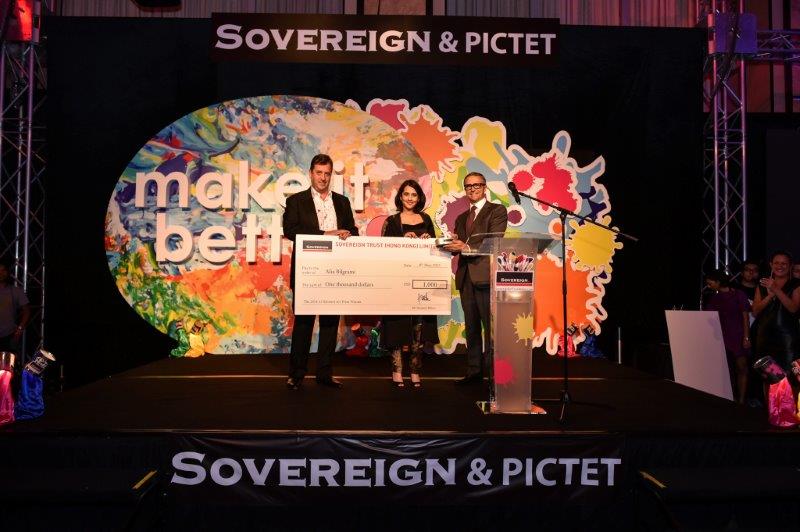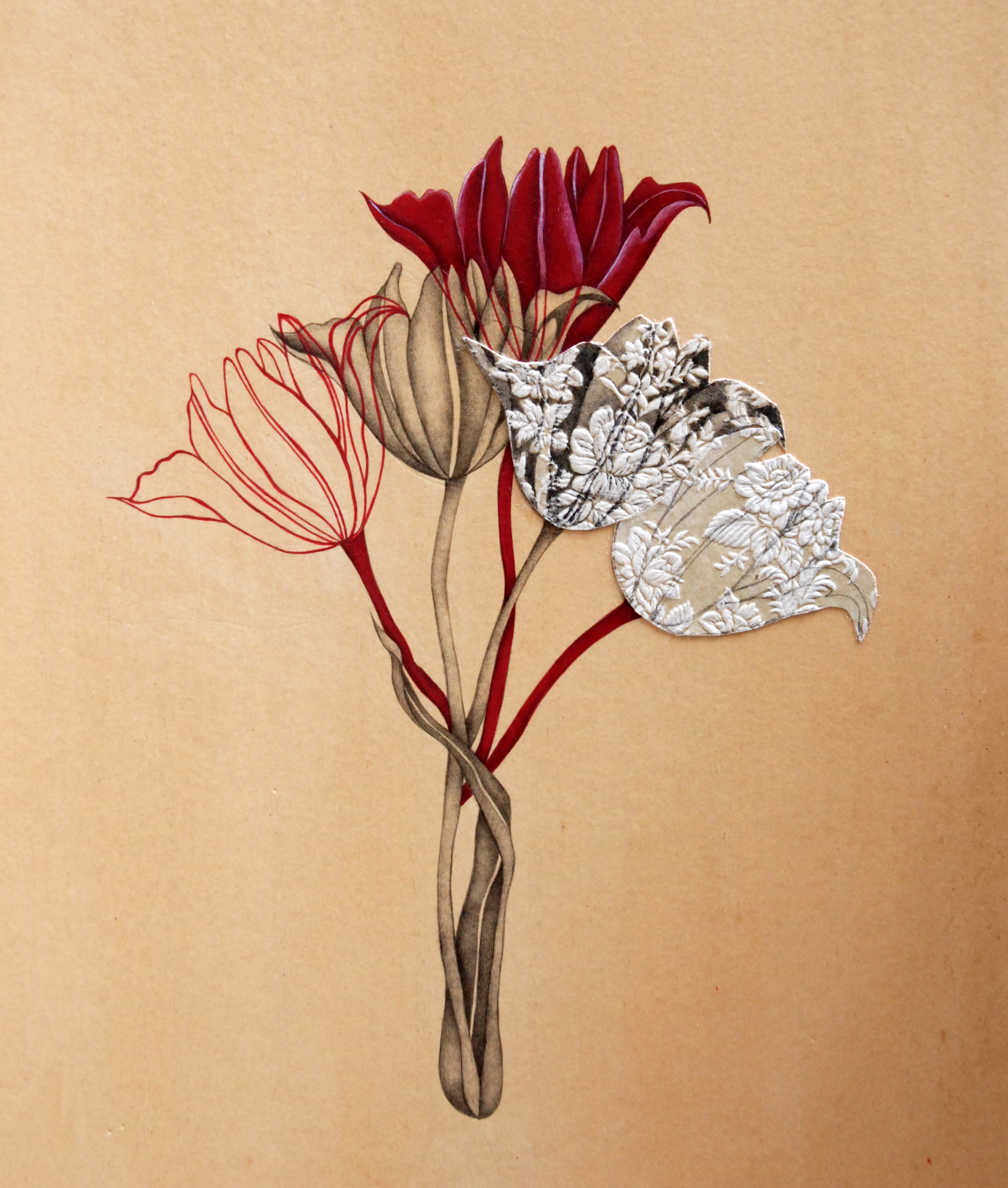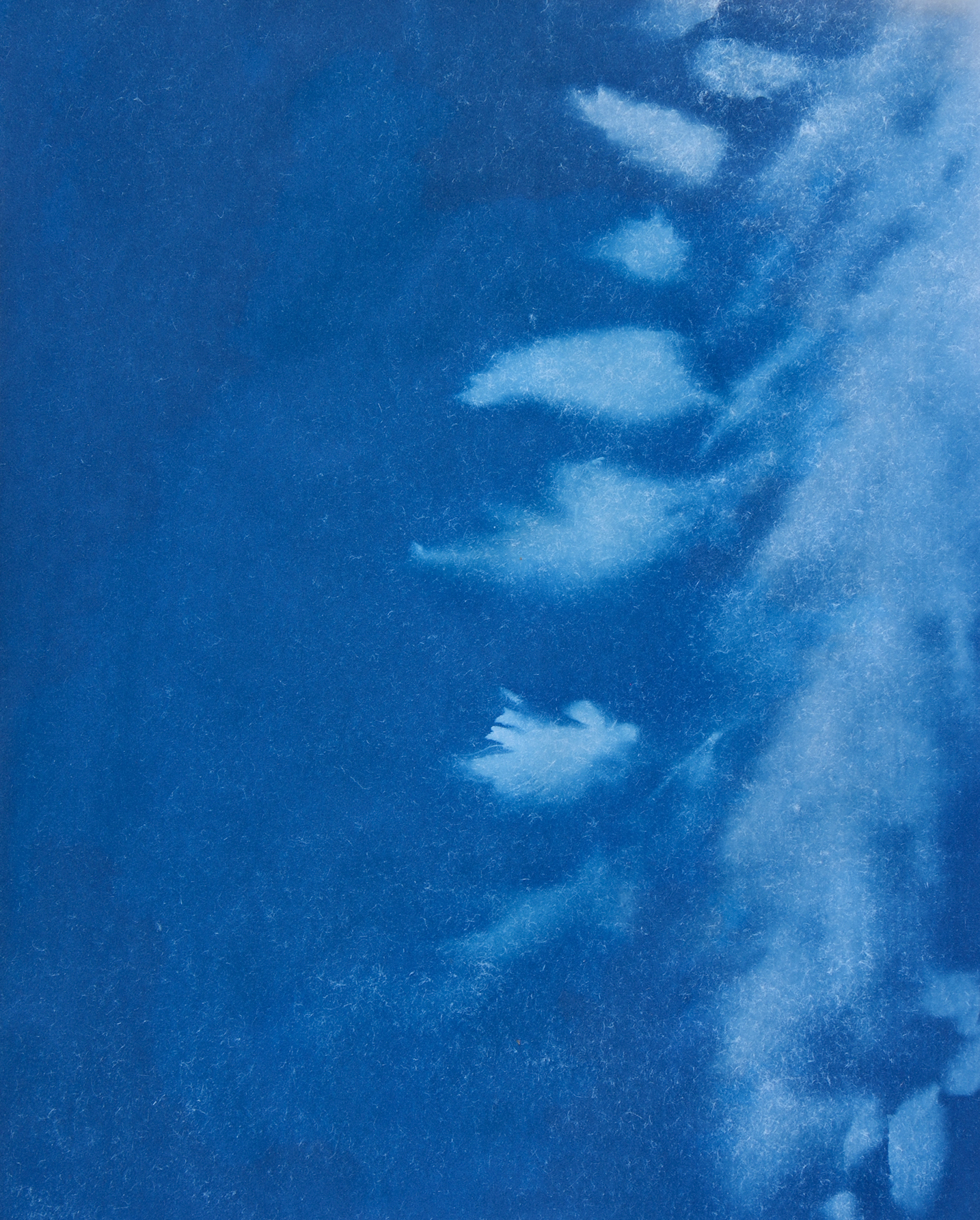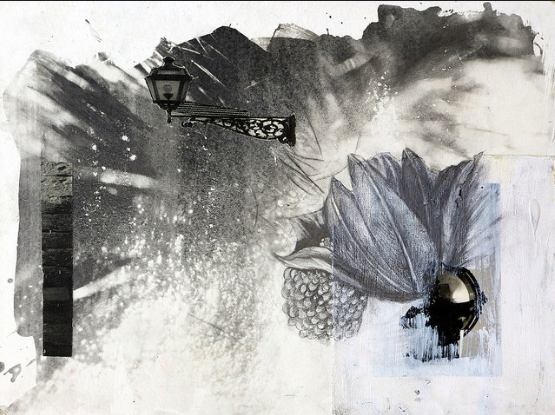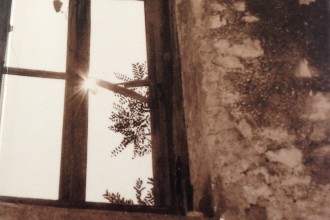I remember recently looking at a painting titled “Memories Atinaâ€. While admiring it, several questions popped into my head. The image was so full of life with its aggressive brushstrokes, multiple layers and strong relics of human emotion. My first impression was that the artist had made it in a moment of angst. The image seemed like a struggle to give shape and form to the chaos that was a part of her world. However, on further inspection it was more of a chronicle of a very personal journey — an attempt to capture time, spaces and feelings. It made me curious to know what thought process led to the conception of this piece of art, and so I felt that our Spotlight series was a good place to start. This time, I wanted to pick someone who was more than just a skilled conventional painter. I wanted someone who was bold when it came to applying marks on a paper; a person that did not limit herself or himself when it came to medium and produces work that is wild and passionate — not bound by conventional methods. Alia Bilgrami just felt like the right pick. Her practice is about exploring herself, and she uses numerous tools to weave her narratives. Bilgrami explores the phenomenon of displacement, having been affected by it herself at the age of seven when she moved from Canada to Karachi after the demise of her mother. This left such a strong impact on the young child that to this day she tries to understand the feeling of loss. Her works serve as platforms through which several emotions surface that are otherwise concealed by Alia’s calm and collected countenance. Thus, this soft-spoken girl speaks volumes through her work. Bilgrami completed her bachelor of fine arts degree in miniature painting at Indus Valley School of Art and Architecture in Karachi, and her masters of fine arts at Central Saint Martins College of Art and Design in London, where she was a recipient of the Cecil Collins Memorial Award. Bilgrami’s work has been exhibited widely on a national level as well as internationally. The artist mostly works with drawing, photography, and contemporary miniature, combining various labour intensive media techniques. She currently works as a curator at the Khaas Art Gallery in Islamabad as well as maintaining her professional art practice.
What is your earliest memory of creating art?
Ever since I was a little girl, my father still relates stories of coming home from work and finding new scribbles on the walls and asking me if I had made new marks. Of course, I would always deny it, but the evidence behind me, the crayons in my hands (and sometimes my mother’s lipsticks) would suggest otherwise!
You have taken on many roles in the art world: writing, curation and painting. Which is the most gratifying?
The truth is I enjoy all of the above and find them to be equally gratifying! However, there are only so many hours in the day, unfortunately resulting in my writing taking a backseat. I am currently torn between curating and artâ€making. I cannot deny that I am happiest when I am focusing on my own practice, for which I really have to take time out. Those moments are precious! However, at the same time I find it extremely gratifying to promote and engage with so many interesting and greatly talented artists from whom I am constantly learning. I love curating and the discourse that surrounds it.
What are the essentials that you cannot work without?
Thick graphite pencils, some good paper, and my camera. Also, unlike most artists, my first instinct is to reach for a pen and paper and write instead of sketching ideas out. My sketchbooks are full of notes!
Every artist has certain “ritualsâ€, for lack of a better word, before they start working? What is yours?
I don’t really have any rituals per say, but I do enjoy listening to some good music and sipping on a hot cup of coffee or black tea while I’m working.
What is the strangest source you have garnered inspiration from?
Pinecones!
Would you say there is one person who has been instrumental in helping you?
This is a tough one because I can’t narrow it down to one person! My father and my Nana would always save my scribbles and drawings of rainbows and smiling suns, “welcome home” cards and such. They would proudly display them and my father still has some of them in a tin box. They encouraged me to always do what I love most. When I was at a crossroads between deciding whether to study art or business after high school, my parents and sisters sat me down and gave me a pep talk about how I had a choice between becoming run of the mill or standing out. They told me that I was lucky to have a special talent. Fortunately, I also married someone who loves art and understands my eclectic, artistic ways. He is a great source of comfort and support to me. Having a partner who believes in you and pushes you to strive harder is hard to come by. So, with the encouragement and support of my family I chose this path and have been lucky to be able to stay on it. One person from the art world who has constantly been a source of help and support is my former teacher, mentor, and one of my most favourite artists — Naiza H. Khan (also my nominator for the Sovereign Asian Art Prize competition).
You are constantly experimenting with different mediums. Is it because you haven’t found what you are most comfortable or content with, or just to add spontaneity to your process?
I just love the spontaneity! I’ve always had great love for both analogue photography and painting. Mixing them together with photoâ€emulsion prints, solar plate etchings, and cyanotypes keeps things exciting. I really enjoy the process — the bits along the way! I enjoy labour intensive media like miniature painting, printing my own photographs, making my own Waslis and brushes, etc, [this] serves as my driving force.
We see tulips resurface many times in your work. What significance do they have in your life?
To me, tulips represent displacement and the appropriation of symbols. In the east, the tulip always represented love in Persian miniatures and poetry. Much later, it was discovered by Europe and appropriated. Being the first item that was bought and sold — essentially the commodity that was first traded and created the stock exchange as we know it today, meaning that it ostensibly turned into a symbol of capitalism. Many artists, especially miniaturists, have used the tulip before me for aesthetic reasons, and I am sure that many more will use it in the years or decades to come. But for me, the tulip is personal and special. Apart from the above explanation, in a way, sometimes my tulips are like self-portraits that evoke my own sense of displacement. Now more than ever, displacement is a global phenomenon that is all around us.
What was one piece you made that was very difficult to part with?
“Memories Afloat”, the title piece from my last solo exhibition at Koel Gallery in Karachi.
What according to you is your biggest achievement?
One of my former teachers (now also a very well-known artist) once told me that I “couldn’t draw” and that she didn’t think I could become an artist! Over a decade later, I think one of my biggest achievements is proving her wrong and persevering despite some of my inner struggles. Furthermore, winning the Sovereign Asian Public Vote Prize was a real turning point for me, and I think is so far one of my biggest achievements. Shortly after that, Khaas Gallery took a booth at Art15*, London’s global art fair. That was my first experience being part of, or curating at, an art fair and it was a truly unforgettable experience. I am grateful to Zishan Afzal Khan, Chief Curator and Owner of Khaas Gallery, for giving me the opportunity to be part of the curatorial team for a project that really put us on the map. 2015 was a lucky year for me!
Any regrets when it comes to your career?
I can’t say I have any regrets, but I do wish I could spend a longer stretch of time than I am able to focus more on artâ€making and experiment with yet more media! I also have high hopes for the future — I have lofty dreams of doing a PhD one day.
What is one artistic venture that you aspire to undertake in the future?
I want to create a huge interactive installation piece in a public space, to bring my art to a wider audience and to engage with more viewers.
What is the worst thing you’ve seen someone do to a painting, and what do you wish you had done about it?
When people want to match a painting with their furniture or curtains that really gets my goat! When clients come to the gallery with such requests, I try to reason with them and get them to see it’s the art in a room that matters, certainly much more than the curtains. If any ‘matching’ absolutely has to be done, then it should ideally work the other way round, with the painting as the focal point that dictates what happens to the rest of the room.
Are you happy with the work being produced in Pakistan currently? What is the one change you would like to see in the art world in Pakistan?
Yes, very much so. I think our art scene is booming and that Pakistan has some of the most talented artists in the world, especially in terms of skill. Of course, it wouldn’t hurt to see a little more experimentation across the board. The one change I would absolutely love to see is for there to be an end to the cliques we have here. I know they exist everywhere, but that does not take away from the fact that it is so very unfortunate. I think everyone deserves a fair chance. If we want an artist’s community to flourish and grow, this is something that needs to change. It really doesn’t matter what art school an artist went to, or indeed whether they went to one at all. It doesn’t matter which city they grew up in or where they live currently. It’s their creativity, concepts, integrity, and foremost their talent that matters.
Art is mostly a subjective experience, but is there a particular message you want to give your audience through your work?
As you have said, everyone’s perspective is different, and to me, that’s the beauty of it. I suppose if there was one message I would like to communicate through my art it’s that at the end of the day we are all the same and that it’s high time we realise this and stop trying to fight it! Religion, race, and language should enrich our global, collective experience instead being the fuel that ignites us, bringing out the worst in the human race — every life matters.
*Editor’s note: The art fair’s name reflects the year. At the time of this interview, it was called Art16. Alia Bilgrami curated with the Khaas Gallery at the art fair in 2015.Â

